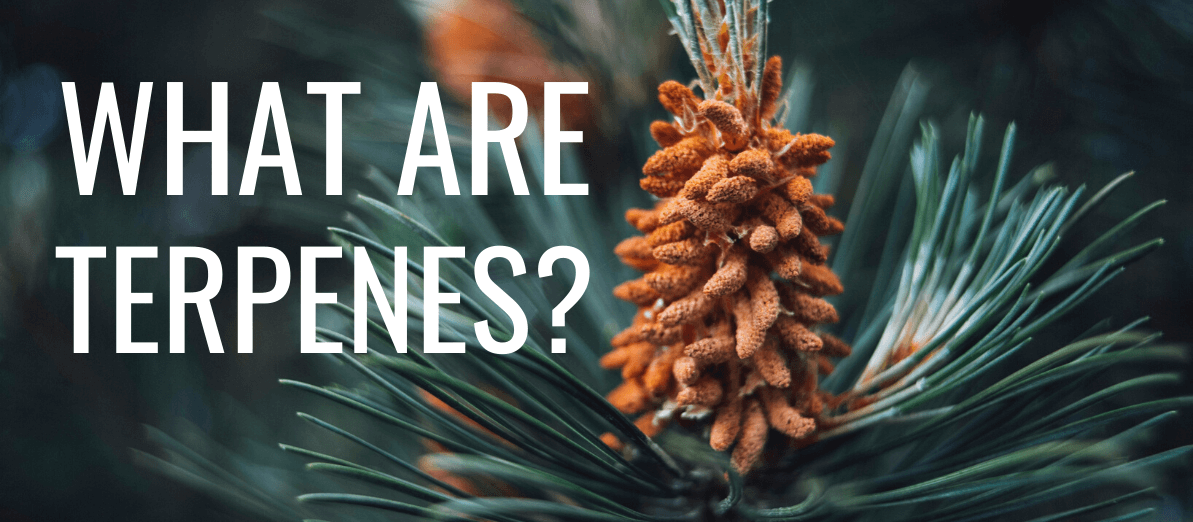Odds are, you’ve probably heard the word “terpenes” thrown around in regards to a specific strain of cannabis. The fact of the matter is that terpenes affect nearly every cannabis-adjacent product, from CBD tinctures and gummies to CBD-infused topicals. Still, among those who enjoy CBD products, the question remains: just what exactly are terpenes, anyway?
Basics of Terpenes
Terpenes, simply put, are the organic compounds responsible primarily for the flavor of hemp, as well as its aroma. In other words, terpenes are responsible for that unique, citrus-heavy flavor you may love from certain CBD products. There is generally a high concentration of terpenes within the trichomes of the cannabis plant, which are the small crystals located on the plant’s exterior. Each individual terpene provides its host plant with an utterly distinct aroma, which in turn influences the taste.
Interestingly enough, terpenes can be found in more than just cannabis plants. These compounds are the source of flavor and aroma for countless other plants as well, and even some insects. In these instances, terpenes continued to fulfill their role as a self-defense mechanism, making certain plants and insects appear unappealing as a food source to local predators.
Smell has long been a determining factor in regards to how we evaluate cannabis products; “loud” strains such as O.G. Kush possess an almost pine-y aroma, and seasoned cannabis experts can often identify a certain strain purely based on its scent. However, the overall utility of terpenes is not solely relegated to any one cannabis-born product in particular. Terpenes are key ingredients in CBD-based essential oils, as well as assorted CBD extracts. In any case, all of these aforementioned items can be distinguished by their odor, and that is only one of the reasons why terpenes are such a critical component of cannabis on the whole.
What Do Terpenes Do?
Terpenes work to provide cannabis plants with oxygen, regenerating them when needed. The function of these organic compounds, in part, is to protect the cannabis plant against a range of natural antagonists, such as insects and inhospitable climates. There are over two hundred types of terpenes in the average cannabis plant, all present to varying degrees. There is also a considerable degree of diversity in terms of the types of terpenes that are present in any given plant: some terpenes are born of the same molecular framework, while others are “new” within the context of the plant’s makeup.
Terpenes also interact with various other molecules within the plant itself, meaning they do more than just provide a pleasant flavor and scent. The collective interaction of terpenes within the cannabis plant is widely known as the “entourage effect,” a synergistic solution that is considered by many to be an integral aspect of any CBD product. The entourage effect is also linked to what many scientists have called “phytocannabinoid-terpenoid synergy,” which is more or less exactly what it sounds like. With the “entourage effect,” terpenes and other natural compounds, such as cannabinoids or phytocannabinoids, work in harmony, producing the lovely, sensorial sensation that we typically associate with good CBD products.
Terpenes vs. Terpenoids
It is also important for cannabis users to be able to differentiate between terpenes and terpenoids. We tend to think of these two terms as being synonymous, when in fact, they are not quite the same thing. Terpenoids are merely terpenes that have been altered through the process of modification – which typically means curing the cannabis plant itself – thus altering the oxygen within the compound. Terpenes, on the other hand, are composed entirely of hydrogen and carbon. Terpene atoms become oxidized when the cannabis plant itself is dried or cured, and what you’re left with at that point are terpenoids.
Obviously, our sense of smell is linked to a number of mental components, including memory and taste. This is why certain terpene aromas are synonymous with quality and purity, while others might generously be described as subpar. There are many different scents when it comes to CBD, but at the end of the day, it’s all a result of terpenes.
In Conclusion
Cannabis, as a plant, is intensely complex in terms of its makeup and biology. Terpenes emit smells that become synonymous with particular strains. We haven’t covered all of the nuts and bolts of how terpenes affect the cannabis plant in today’s article, but we hope to have provided you with a useful primer for understanding how essential this compound is in the world of CBD and cannabis in general!



